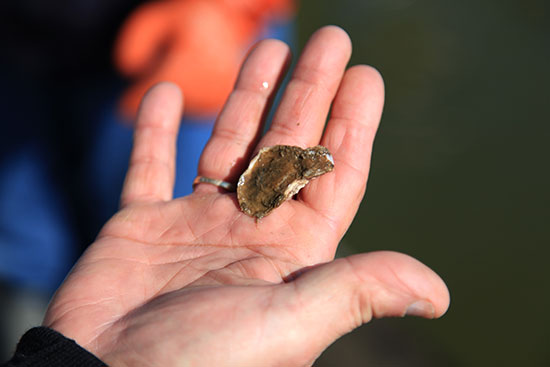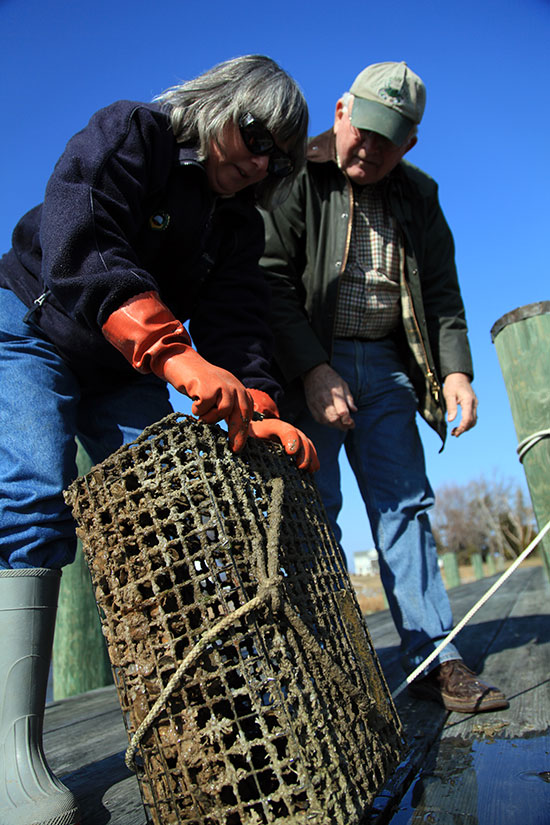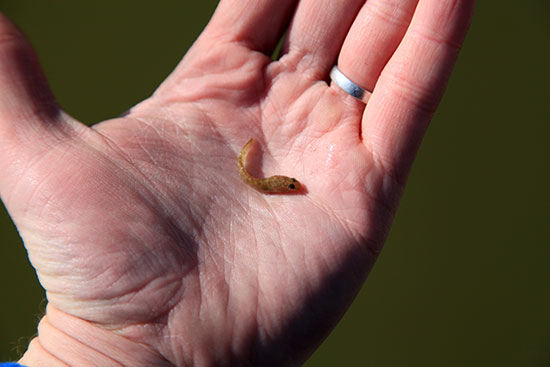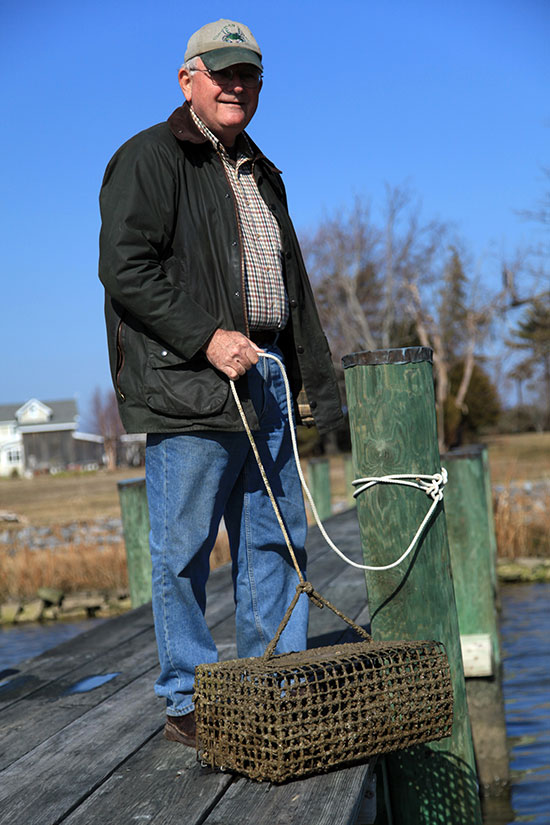Tilghman Islanders grow oysters to replenish local reefs
Cages on private piers give spat a head start before they are planted in the Bay.

On private piers up and down Harris Creek, hundreds of metal cages hang from ropes into blue-green water. Inside each cage are countless little oysters, which will grow here, safe from predators and sediment, during their first nine months of life. Once the spat are large enough, they will be pulled out of their short-term shelters and put onto boats to be replanted on protected reefs just a few short miles away.
The cages—along with the bivalves inside them—are cared for by volunteers with the Tilghman Islanders Grow Oysters (TIGO) program, itself a local branch of the Marylanders Grow Oysters program that is managed by the Phillips Wharf Environmental Center (PWEC).
Now in its second season, TIGO has recruited more than 80 volunteers across the so-called “Bay Hundred” region—from Bozman and Neavitt to Wittman and Tilghman Island—to further oyster restoration efforts in the Chesapeake Bay.
Over the past two centuries, native oyster populations have experienced a dramatic decline, as habitat loss, disease and historic over-harvesting have taken their toll. But programs like this one give hatchery-grown oysters a head start before they are put into the Bay to replenish critical underwater reefs.

The TIGO program has attracted a wide range of restoration enthusiasts, from the middle-school student who has tracked her oysters’ growth for a science fair project to the neighbors who have competed against each other to grow more and bigger oysters. The main draw? What little effort is involved.

“Growing oysters is an effort, but it’s a really easy effort,” said TIGO coordinator Carol McCollough. “And we remove as many of the roadblocks as we possibly can for people who want to do this.”
Aside from a promise to keep cages free of excess sand and silt, the program doesn’t ask too much of its volunteers—and this has worked to its advantage.
H. Truitt Sunderland is a Wittman resident whose cages are filling up fast after six months of growth. The oysters have gone from mere millimeters to one and two inches in size, and a host of other critters—like grass shrimp and gobies, mud crabs and skillet fish—have taken up residence on this makeshift reef just as they would do on oyster bars in the Bay.

Sunderland’s home sits on Cummings Creek, and Sunderland has used the ease of the work involved—“I don’t even know how they can call this volunteer work,” he laughed—to involve his neighbors. Now, there are 24 cages on 12 piers in this single stretch of water.
Tilghman Island resident and fellow volunteer Steve Bender has had a similar experience. “The process is simple,” Bender said, standing on a wooden pier that juts into Blackwalnut Cove. “It’s not that demanding. It’s not that difficult to care for [the oysters].” And in response to his encouragement, Bender’s neighbors have been “glad” to join.

While projects like this one are a small drop in the restoration bucket, McCullough hopes that TIGO can cast a personal light on conservation for all those who are involved.
“We [at PWEC] inform, inspire and involve,” McCullough said. “We’re all about getting people to commit to [changes in] behaviors. It’s very easy to give money. It’s less easy to write letters. And I think in many ways, it’s even less easy to do something personal—to do restoration work on your own.”
But for McCullough, it’s possible that the simple act of caring for a cage of oysters could act as a stepping stone toward further involvement in the Bay.
“Oysters have become very exciting to people,” McCullough said. “They recognize that every single additional oyster in the Bay is a positive thing. That oyster restoration is something that’s bigger than they are.”
For more photos, visit the Chesapeake Bay Program Flickr page.
Photos by Multimedia Coordinator Steve Droter.

Comments
Bravo for all involved! Happy to help the Bay in whatever small way I can. And, I do realize that to make 'something happen,' IT TAKES A VILLAGE! Not a bad concept for those of us on Harris Creek, who 'care' about the Chesapeake and are able to help in little, but potentially important ways. I think about MY baby oysters every day and hope I'm doing it properly! Spring/summer will tell!!! --Ginny
Thank you!
Your comment has been received. Before it can be published, the comment will be reviewed by our team to ensure it adheres with our rules of engagement.
Back to recent stories